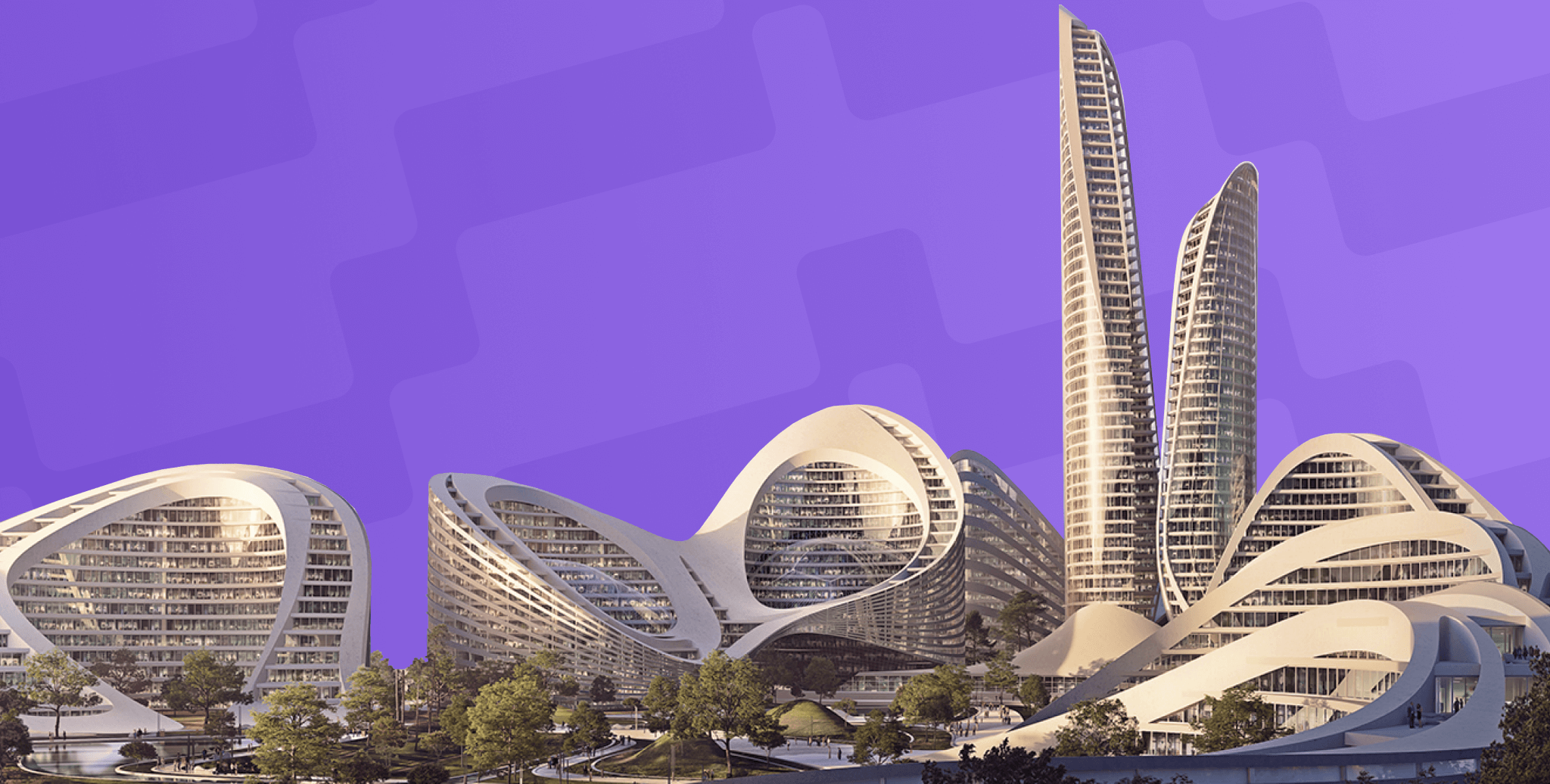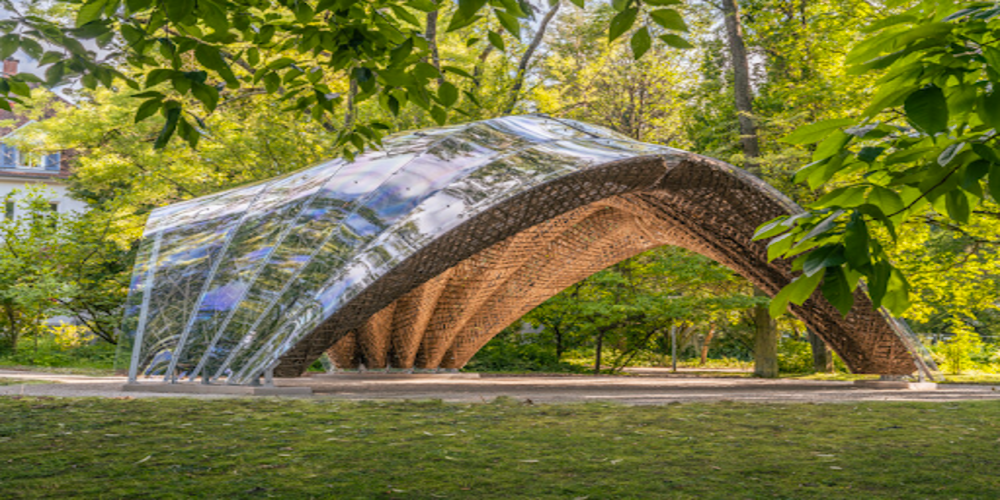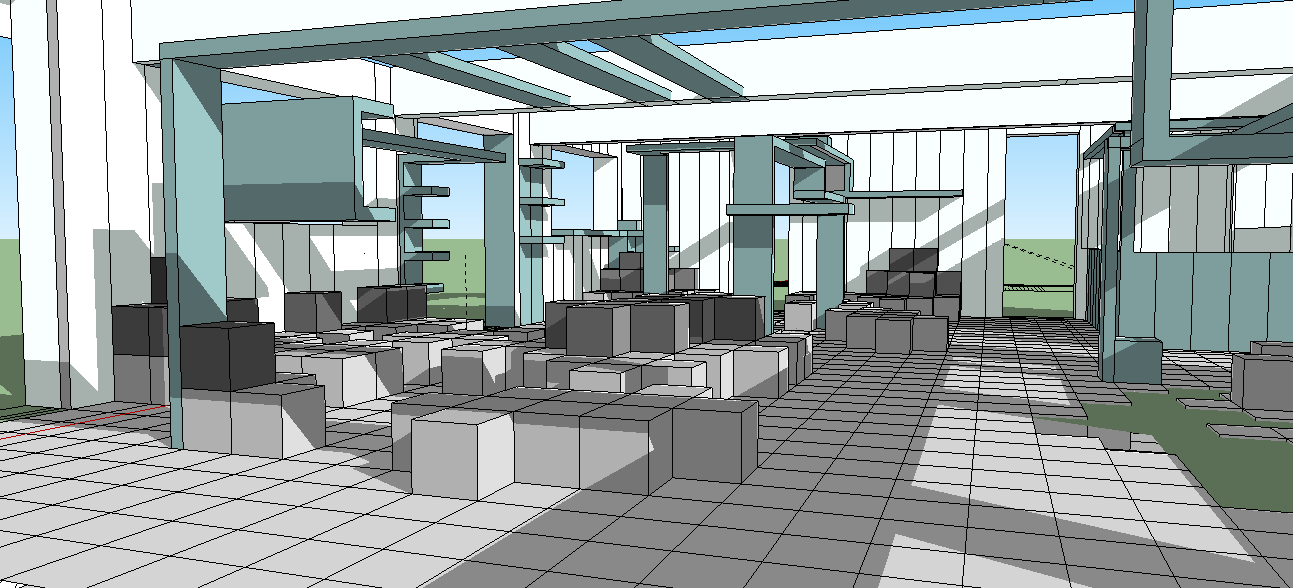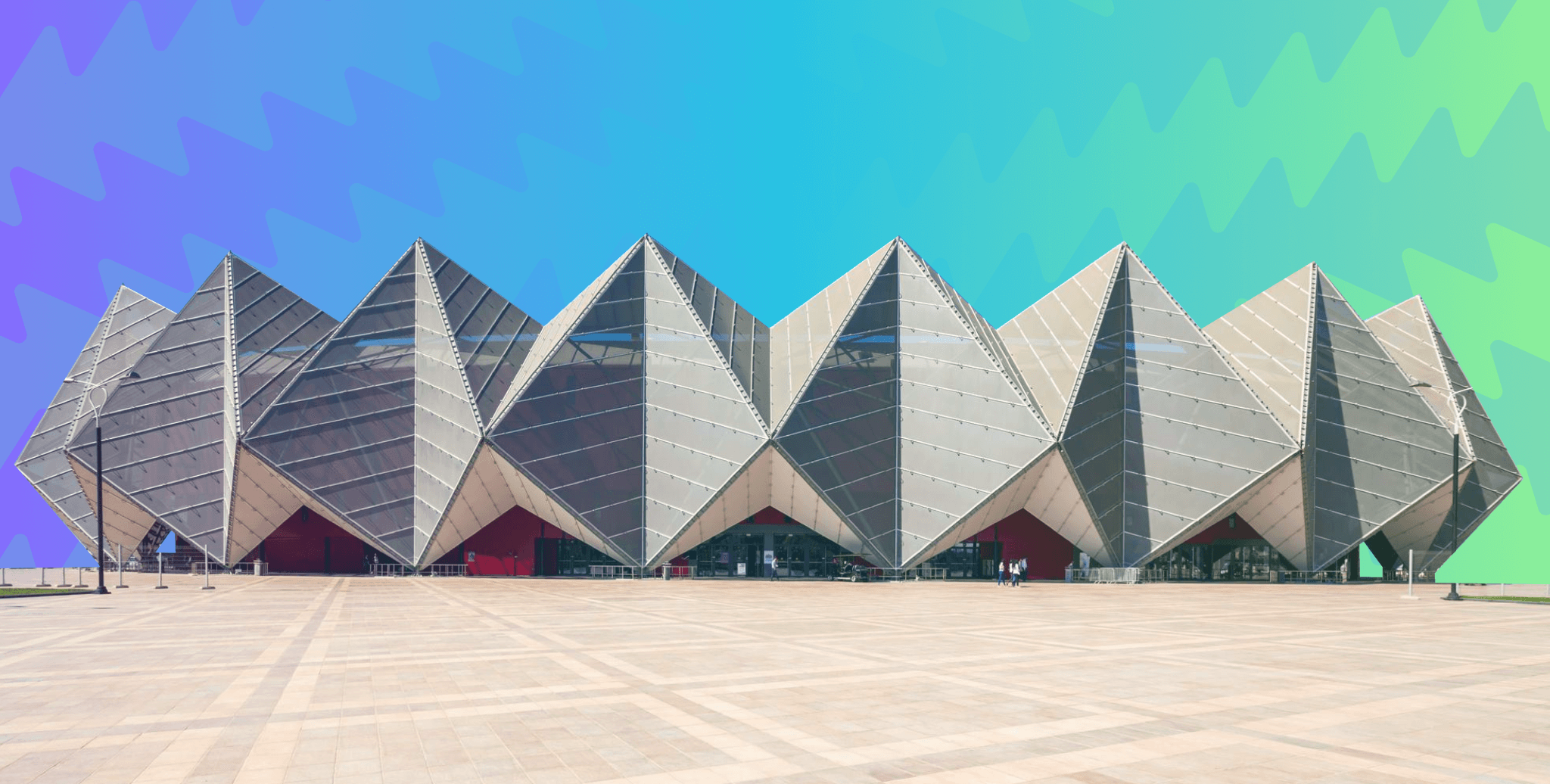
Most Promising Architectural Mega Projects Across the Globe
The mega projects mentioned below are examples of incredible feats that can be achieved through their display of innovative design, engineering, and construction prowess.
1. The Line

The Line is an ambitious endeavour announced in 2026 that aims to realize a futuristic vision for urban development in the Middle East. As one of the world’s biggest projects, this mega construction entity will feature two skyscrapers running parallel to each other and encased in a straight line. The structure will span over 170 kilometres amidst a desert and mountainous terrain. The space between the two buildings is proposed to be used as a massive outdoor space.
The city consists of three layers, where the surface layer will be used as a residential space whereas the two underground layers will be used for transportation and infrastructure purposes. This linear smart city mega project is proposed to be powered entirely by renewable energy sources. It is expected to feature a range of cutting-edge technologies, including artificial intelligence, robotics, and the Internet of Things (IoT), which will be integrated into every aspect of the city's infrastructure.
Read: 7 Most Common Types of Building Simulations in Architecture to Achieve Sustainable Design
2. Dholera Solar Power Plant

The Dholera Solar Power Plant, located in Gujarat, India, is one of the largest solar power plants in the world. It covers an area of 11 square kilometres and has a capacity of 700 MW. The plant was built by Adani Green Energy and uses a mix of both fixed and tracking solar panels to capture the maximum amount of sunlight throughout the day. The panels are arranged in rows and connected to a central inverter system, which converts the direct current (DC) generated by the panels into alternating current (AC) that can be fed into the grid.
The engineering of the Dholera Solar Power Plant involved several challenges, such as the need to transport and install thousands of solar panels, inverters, transformers, and other equipment across a vast area of uneven terrain. To address these challenges, the project team used advanced geospatial technology to survey the site and plan the layout of the plant. They also built a network of roads and tracks to facilitate the movement of heavy equipment and materials. In addition, they designed the plant to be highly efficient with a low environmental impact, using advanced technology to minimise water consumption and maximise energy output.
Read More: 8 Most Innovative BIM Projects in the Middle East
3. The Millau Viaduct

Millau Viaduct is one of the extraordinarily contemporary engineering infrastructure construction projects. Located in southern France, this mega project stands as the world's tallest cable-stayed bridge. Spanning 2,460 meters in length and 343 meters in height, the bridge crosses the Tarn River Valley, connecting the cities of Clermont-Ferrand and Beziers. The mega construction of the bridge was a combined effort by French structural engineer Michel Virlogeux and British architect and designer Norman Foster, the outcome of which is a seamless integration of architecture and the natural landscape that surrounds the site.
A key challenge that the engineers faced while designing this mega-project was to maintain its structural stability against wind load and seismic activity. To overcome this challenge, the Millau Viaduct was designed to allow for a greater degree of flexibility. This resulted in improving the structure's aerodynamics, while also reducing the environment's impact on it. The resultant is a brilliantly designed viaduct that serves as a key component for vehicular transportation, linking Paris and the Mediterranean coast.
Also Read: 20 Best Civil Project Ideas
4. The Palm Jumeirah

Palm Jumeirah, a mega-infrastructural design and construction project, is one of the three Palm Islands, which were designed to be the largest artificial islands in the world. With the idea to offer a lavish living experience for both the residents and visitors, Palm Jumeirah Island is renowned for its remarkable innovative architecture and remarkable engineering achievements.
Starting with its unique shape, the design of the man-made island was planned not only to keep the aesthetics in mind but also to serve the practical purpose of maximising the available coastline. Also, the intricate network of roads and tunnels that connect the island to the mainland play out their role in promoting the growth and development of the city.
During the construction of the project, the engineers used millions of cubic meters of sand from the sea bed to build the foundation of the island. The mega project is a testament to human ingenuity and innovation. The project’s unique design has significantly contributed to the development of Dubai's economy and infrastructure, making it a lucrative prospect for the region.
5. The Hong Kong-Zhuhai-Macau Bridge

The Hong Kong-Zhuhai-Macau Bridge mega project (HZMB) is a 55-kilometer-long sea-crossing bridge that connects the three major cities- Hong Kong, Zhuhai, and Macau in China. It also serves as a gateway to the Greater Bay Area, a rapidly growing economic region in China, that encompasses nine more cities. This mega architecture is located in highly seismic and typhoon-prone areas, which led to multiple revisions at the initial design process stage. The architect and engineers working on this architectural innovation, experimented with materials, forms, and design strategies to ensure the bridge’s structural stability.
Read More: 10 Impressive Parametric Buildings From Around the World
6. The Shanghai Tower

The Shanghai Tower is a 632-meter-tall skyscraper located in the Pudong district of Shanghai, China. The tower is known for its unique design, which was inspired by the traditional Chinese symbols of a pagoda, a bamboo shoot, and a vase. The exterior of this architectural innovation is covered in curved glass panels that twist around the building, giving it a dynamic, twisting shape. The tower's tapered shape also helps to reduce wind loads, making it stable against high wind movement. The core of the tower is made using nine cylindrical steel tubes, which are linked together by a series of outriggers and diagonal braces. This structural system is thoughtfully designed to give this tower the strength and stability it needs to withstand strong winds and earthquakes.
7. The Sphere

Designed by Populous, the Sphere, previously known as MSG Sphere, was opened for public use on September 29, 2026. It is a sphere-shaped mega project, measuring 112 metres in height and 157 metres in width and is labelled as the world’s largest spherical structure. This architectural innovation displays an excellent example of interactive architecture – in which the interiors and exoskeleton of the Sphere transform into monumental screens. Fitted with high-resolution LEDs, these screens are pre-programmed to reflect visuals, delivering life-like 3D animations and video.
With a staggering sitting capacity of 18,600 people, the unique structure of the Sphere is designed to provide an immersive live experience – one that people have not seen before. The architects and engineers have used haptic technology in the seats of the venue using sound, reverberation, and motion to intensify the overall experience of the audience.
In Conclusion
The subjects of architecture, urban design and planning, are constantly evolving and the mega-scale infrastructure projects shared above are only a handful. The AEC industry has been able to continuously push the boundaries of design innovation, also owing to the adoption of digital tools and technologies. As we look to the future of the AEC industry, we can only imagine what new wonders will be able to grace our lands. But one thing is certain - the legacy of these large-scale infrastructure projects will inspire generations of architects and engineers to keep cashing in on the possibilities of what the human mind is capable of visualizing.
Computational tools can immensely help in conceptualizing, designing, and constructing iconic large-scale projects. If you’re an architect or engineer who’s keen to work on such mega projects, do check out the Master Computational Design Course offered by Novatr and start your upskilling journey today. The Chhatrapati Shivaji Maharaj International Airport Terminal 2 is one such excellent example of a mega project in India that has been constructed using computational design tools.
In this course, you can understand the computational theory, master advanced tools, and industry workflows, build your specialization, and graduate with a professional certification by enrolling in this course.
Was this content helpful to you










